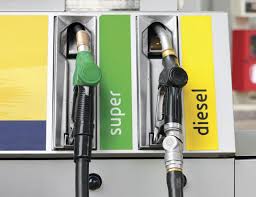
According to weekly government data released this week, the U.S. last week exported a record 8 million barrels of gasoline and nearly 10 million barrels of distillates.
The U.S. has been oversupplied with gasoline and crude oil and the U.S. refined product experts have been growing as refineries run at high levels. Mexico and destinations in South and Central America are the destination where a big chunk of the exported fuel probably went.
"We have never exported more gasoline and distillates than we did last week. ...The total amount of exports is huge. There's no doubt about it that it's a record," said Tom Kloza, head of global energy analysis at Oil Price Information Service.
According to weekly data from the Energy Information Administration, the 1.1 million barrels of gasoline exported per day, rose from 795,000 barrels a day the week earlier and 472,000 barrels a day at the same time last year.
It will be several months that final detailed data on December exports will be available. October data should be available next week. Up from a four week average of about 1.2 million barrels a day, distillate exports totaled 1.4 million barrels a day last week.
"The export markets are taking what the domestic demand doesn't need, and it's good for refiners on the Gulf Coast…from that stand point it's helping refining margins," said Andrew Lipow, president of Lipow Oil Associates. There is strong demand in Mexico and the Caribbean at this time of year, he said.
As refineries there are far less efficient and run at about 50 percent capacity compared to closer to 90 percent in the U.S., Kloza said Mexico has increasingly become a destination for U.S. gasoline exports.
"They're just across the Gulf of Mexico. We've added two million barrels a day of [refining] capacity to the U.S. in this century," he said. "If it weren't for gasoline exports - and the highest months for exports can be December and January - we'd be looking to match that big inventory buildup we had last January." Kloza said supply peaked last winter at about 258 million barrels.
Mexico exports its heavier crude to the Gulf Coast for refining. Just over 500,000 barrels a day of Mexican crude was sent to the U.S. in September.
"Traders at the Gulf Coast...keep talking about the tremendous gasoline demand to move to central and South America," Kloza said. Spot gasoline in the Gulf Coast is just four cents under the futures price, but it's typically more like 20 or 25 cents under, he said.
"There's clearly a lot of demand for Gulf Coast gasoline. The difference maker is exports. I think Mexico is probably 40 to 50 percent of it."
Demand for gasoline in January in the U.S. will be weak, he expects. According to AAA, U.S. retail gas prices were at a national average of $2.303 per gallon of unleaded Thursday. The annual average has been $2.12 per gallon in 2016, Kloza said.
"I think domestic demand is incredibly lumpy," he said.
(Source:www.cnbc.com)
The U.S. has been oversupplied with gasoline and crude oil and the U.S. refined product experts have been growing as refineries run at high levels. Mexico and destinations in South and Central America are the destination where a big chunk of the exported fuel probably went.
"We have never exported more gasoline and distillates than we did last week. ...The total amount of exports is huge. There's no doubt about it that it's a record," said Tom Kloza, head of global energy analysis at Oil Price Information Service.
According to weekly data from the Energy Information Administration, the 1.1 million barrels of gasoline exported per day, rose from 795,000 barrels a day the week earlier and 472,000 barrels a day at the same time last year.
It will be several months that final detailed data on December exports will be available. October data should be available next week. Up from a four week average of about 1.2 million barrels a day, distillate exports totaled 1.4 million barrels a day last week.
"The export markets are taking what the domestic demand doesn't need, and it's good for refiners on the Gulf Coast…from that stand point it's helping refining margins," said Andrew Lipow, president of Lipow Oil Associates. There is strong demand in Mexico and the Caribbean at this time of year, he said.
As refineries there are far less efficient and run at about 50 percent capacity compared to closer to 90 percent in the U.S., Kloza said Mexico has increasingly become a destination for U.S. gasoline exports.
"They're just across the Gulf of Mexico. We've added two million barrels a day of [refining] capacity to the U.S. in this century," he said. "If it weren't for gasoline exports - and the highest months for exports can be December and January - we'd be looking to match that big inventory buildup we had last January." Kloza said supply peaked last winter at about 258 million barrels.
Mexico exports its heavier crude to the Gulf Coast for refining. Just over 500,000 barrels a day of Mexican crude was sent to the U.S. in September.
"Traders at the Gulf Coast...keep talking about the tremendous gasoline demand to move to central and South America," Kloza said. Spot gasoline in the Gulf Coast is just four cents under the futures price, but it's typically more like 20 or 25 cents under, he said.
"There's clearly a lot of demand for Gulf Coast gasoline. The difference maker is exports. I think Mexico is probably 40 to 50 percent of it."
Demand for gasoline in January in the U.S. will be weak, he expects. According to AAA, U.S. retail gas prices were at a national average of $2.303 per gallon of unleaded Thursday. The annual average has been $2.12 per gallon in 2016, Kloza said.
"I think domestic demand is incredibly lumpy," he said.
(Source:www.cnbc.com)





